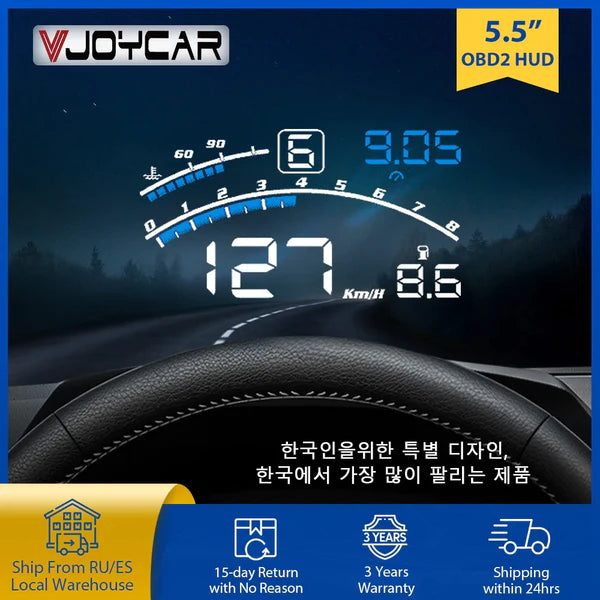In recent years, Head-Up Display (HUD) technology has gained significant traction in the automotive industry, revolutionizing the way drivers interact with vehicle information. Originally developed for military aircraft, HUDs have transitioned into consumer vehicles, offering a safer and more convenient driving experience. In this article, we'll delve into the features, benefits, and future prospects of HUD technology in automobiles.

What is Head-Up Display (HUD)?
A Head-Up Display (HUD) is a transparent display that presents information directly in the driver's line of sight, typically projected onto the windshield or a separate screen. This technology allows drivers to access critical information without having to divert their attention from the road, enhancing safety and reducing distractions.
Key Features of HUD Technology:
-
Information Overlay: HUDs can project a variety of information onto the windshield, including vehicle speed, navigation directions, incoming calls, and safety alerts such as lane departure warnings and collision detection.
-
Customization Options: Drivers can often customize the display to prioritize the information most relevant to them, ensuring a personalized and intuitive user experience.
-
Augmented Reality (AR) Integration: Advanced HUD systems may incorporate augmented reality elements, such as highlighting important road signs, landmarks, and potential hazards directly on the windshield.
-
Visibility in Various Conditions: HUD displays are designed to remain visible in different lighting conditions, including bright sunlight and low-light environments, ensuring optimal readability at all times.
Benefits of HUD Technology in Automotive:
-
Enhanced Safety: By providing critical information within the driver's field of view, HUDs help minimize distractions and keep the driver focused on the road ahead, reducing the risk of accidents caused by looking away from the windshield.
-
Improved Ergonomics: HUDs eliminate the need for drivers to glance down at traditional instrument panels, reducing neck strain and fatigue during long drives.
-
Increased Awareness: With real-time updates on speed limits, navigation instructions, and potential hazards, drivers can make more informed decisions, leading to safer and more efficient driving.
-
Convenience and Comfort: Accessing important information without taking eyes off the road enhances driving comfort and overall convenience, particularly during busy traffic or inclement weather conditions.
Future Prospects and Innovations:
As automotive technology continues to evolve, HUDs are expected to become even more sophisticated and integrated into the driving experience. Some future developments and innovations in HUD technology include:
-
Integration with Advanced Driver Assistance Systems (ADAS): HUDs will play a pivotal role in displaying information from ADAS features like adaptive cruise control, lane-keeping assist, and autonomous driving functionalities.
-
Expanded Connectivity: HUDs may integrate seamlessly with smartphones and other smart devices, providing access to additional features such as music streaming, voice commands, and smart home controls.
-
Enhanced Augmented Reality (AR) Features: Future HUDs may leverage augmented reality technology to provide real-time navigation overlays, dynamic traffic updates, and interactive points of interest.
In conclusion, Head-Up Display (HUD) technology represents a significant advancement in automotive innovation, offering drivers a safer, more convenient, and more immersive driving experience. As this technology continues to evolve and integrate with other automotive systems, its potential to enhance road safety and driving comfort will only continue to grow.
